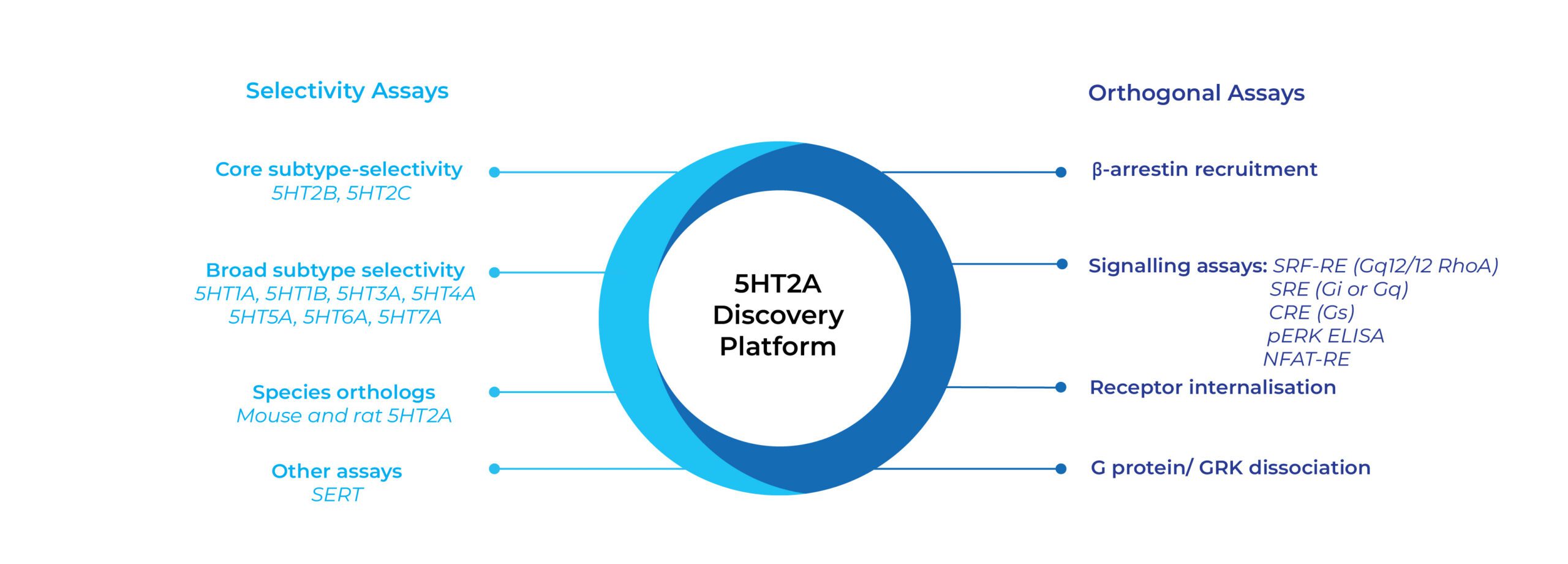Mitochondrial Function
Understanding Mitochondrial Function for Neurodegenerative Disease Research
Mitochondria are vital organelles responsible for energy production within cells, with the brain being particularly dependent on this energy supply due to its high metabolic demands. Any disruption in energy production can result in damage or dysfunction in brain cells, underscoring the significance of modulating mitochondrial function in addressing neurodegenerative disorders.
At Syganture Discovery, we offering unparalleled expertise and specialized services in mitochondrial research, equipping researchers with cutting-edge tools to explore the therapeutic potential of targeting mitochondria. By harnessing these tools and technologies, our Mitochondrial Dysfunction Platform empowers researchers to gain comprehensive insight into mitochondrial function and its implications in disease pathology, facilitating the development of novel therapeutic interventions for neurodegenerative disorders and beyond.
Off-the-Shelf Tools
A broad array of ready-to-run and customizable assays designed to support mitochondrial function studies, ensuring convenience and efficiency for your research.
Cutting-Edge Technologies
State-of-the-art technologies to enable precise, accurate measurement of mitochondrial function, enabling in-depth analysis and interpretation of data.
High-Throughput Screening
Medium and high-throughput screening capabilities, supporting rapid identification of potential drug candidates targeting mitochondrial dysfunction.
Interrogating Mitochondrial Function
Understanding mitochondrial behaviour is paramount for advancing new treatments targeting age-related cognitive decline and neurodegenerative disorders. To achieve this, validating high-quality, robust assays capable of effectively interrogating mitochondrial function is crucial. With such assays and endpoints, researchers can obtain comprehensive insight into mitochondrial function, enabling the identification of novel therapeutic targets and the development of effective interventions for age-related cognitive decline and neurodegenerative disorders. Sygnature Discovery’s Mitochondrial Dysfunction Platform provides a variety of assays and endpoints designed to comprehensively evaluate mitochondrial function and support novel drug discovery.
- Cellular Toxicity
- ATP/ADP Measurements
- NAD/NADH Measurements
- Pyruvate/Lactate Measurements
- Oxygen Consumption Rate
- Cytosolic Calcium Levels
- Mitochondrial Membrane Potential Measurement
- General Oxidative Stress Levels
Comprehensive Assay Solutions for Mitochondrial Dysfunction
Our Mitochondrial Dysfunction Platform enables an in-depth investigation into the intricacies of mitochondrial function and its correlation with neurodegenerative disorders. Through collaborative efforts and ongoing advancements in mitochondrial science, there is great promise for developing innovative, effective treatments that can significantly improve the lives of those affected by these debilitating conditions.
Contact Syganture Discovery
To learn more about our services or to request a quote.
Customizable screening cascades to investigate 5HT receptor modulation
Serotonin (5-hydroxytryptamine [5HT]) receptors are a family of G-protein coupled receptors and one ligand-gated ion channel involved in signal transduction in response to the neurotransmitter 5HT. While 5HT and its receptors are thought to be involved in many physiological functions, dysfunction of 5HT receptors has also been implicated in numerous CNS disorders.
To aid the discovery of 5HT receptor targeted therapeutics, SB Drug Discovery provides access to a range of 5HT receptor tools, including a comprehensive portfolio of 5HT receptor-expressing cell lines, robust binding assays and downstream functional assays.
| 5HT Receptors and Related Targets | ||||
|---|---|---|---|---|
| 5HT1A | 5HT1B | 5HT2A | Mouse 5HT2A | Rat 5HT2A |
| 5HT2B | 5HT2C | 5HT3A | 5HT4 | 5HT5A |
| 5HT6 | 5HT7 | SERT | ||
With a broad selection of binding and cell-based assay technologies validated and ready to run in high-throughput screening or lead-optimization formats, our plug and play approach to 5HT receptor drug discovery enables custom designed screening cascades to suit your needs.
Customizable screening cascade to investigate adenosine receptor modulation.
Members of the G-protein coupled adenosine receptor family mediate the physiological actions of adenosine via a variety of signal transduction pathways. These receptors are implicated in many pathological functions relating to human disease and represent an important target for therapeutic intervention.
To facilitate adenosine receptor drug discovery research, SB Drug Discovery’s portfolio of adenosine receptor cell line has been used to validate robust off-the-shelf binding and cell-based assays to support your screening and lead optimization studies.
Figure 1: Reproducible dose response curve of NECA against Adenosine A2a in a radioligand binding assay.








